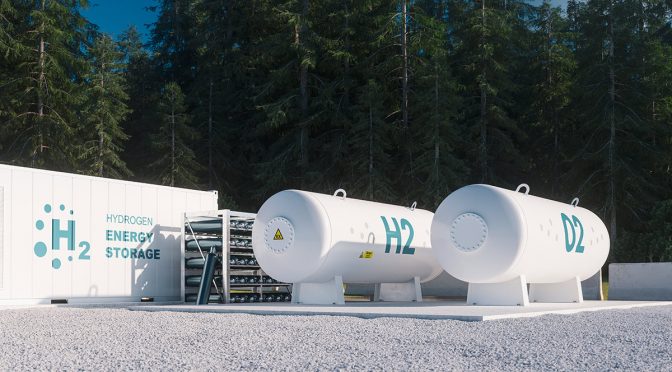Three hydrogen projects in which RWE is involved have been shortlisted for funding from the Important Project of Common European Interest (IPCEI) programme: a joint project with partners from the GET H2 initiative as well as the AquaPrimus 2 and HyTechHafen-Rostock projects. This was announced today by the German Federal Ministry of Economics and Technology (BMWi) and the Federal Ministry of Transport and Digital Infrastructure (BMVI). These ministries are coordinating the pre-selection of projects at the German national level.
According to the German government, a total of 8 billion euros in funding is available for German projects, with which the BMWi, the BMVI and the German federal states intend to drive forward the development of the hydrogen economy in Germany and Europe. 230 project applications were submitted. After technical examination and evaluation, 62 projects have now been shortlisted to take part in a selection process at the European level. In this so-called matchmaking process, the projects proposed by the EU states and Norway will be linked up with each other and evaluated.
Nominated projects with RWE participation
- IAs part of the GET H2 project: the construction of a 300 megawatts (MW) electrolysis plant for the production of green hydrogen in Lingen, the creation of a hydrogen storage facility in Epe, the construction of a plant for the production of green steel in Salzgitter, and the conversion of a gas pipeline connecting Marl, Duisburg and the Salzgitter site to the Dutch gas network. The joint project by the partner companies bp, Evonik, Nowega, OGE, RWE and SalzgitterFlachstahl aims to create a cross-border infrastructure to link the production, transport, storage and industrial use of green hydrogen between Lingen, Gelsenkirchen, the Dutch border and Salzgitter.
- As part of the AquaVentus initiative: the AquaPrimus 2 project, in which two 14MW offshore wind turbines with integrated water electrolysis are to be erected off the coast of Heligoland by 2025 under the leadership of RWE. The plants shall then be connected to Heligoland by pipeline. For this RWE is working in close collaboration with multiple partners on the project, including Shell and the technology providers Siemens Gamesa and Siemens Energy. AquaPrimus 2 is part of the AquaVentus initiative, which intends to use electricity from offshore wind turbines in combination with offshore electrolysis on an industrial scale. Electrolysis plants in the North Sea with a total volume of 10 gigawatts (GW) are planned for 2035. From Heligoland, the hydrogen is to be transported onshore via a collection pipeline.
- HyTechHafen-Rostock: The construction and operation of 100 MW of electrolysis capacity in the Rostock seaport for the production of green ammonia. RWE is working with Rostock Port and other local partners on this project. The project is part of the plan to comprehensively transform Rostock and the Rostock seaport to carbon-free energy supply and storage, fed from renewable sources. In the long term, hydrogen generation capacities of up to 1 GW are to be created on site.
The European matchmaking process will start on 8 June. The first funding decisions are expected to be released in spring 2022.

“Hydrogen plays a key role in the decarbonisation of industry. Together with partners, RWE is currently forging ahead on 30 hydrogen projects. We are very well positioned for this along the entire hydrogen value chain. We are very pleased that three of these projects have now been nominated to be selected and funded under the IPCEI programme. This gives our hydrogen activities an additional boost.”


